Abstract
Salmonella johannesburg (1, 40: b: e, n, x), a previously rare salmonella serotype, has established itself rapidly as an important and highly prevalent cause of gastroenteritis among children. The clinical features of the infection are usually mild but chronic. It has been suggested that S. johannesburg was introduced into Hong Kong through imported foods but no common vehicle could be traced as the source of infection. A thorough investigation of one paediatric ward in a general hospital revealed that non-infected patients admitted to the ward usually acquired S. johannesburg infection within 3-7 days, with or without symptoms. Thus hospital cross-infection could be a significant factor in contributing to its rapid spread in the community. Furthermore, the rapidity with which S. johannesburg spread was facilitated by (a) its tendency to produce a chronic infection, (b) its multiple resistance to antibiotics, and (c) the higher infectivity of S. johannesburg over other salmonellas endemic in this locality. These factors combined with the overcrowded conditions in many of the hospitals in Hong Kong facilitated the occurrence of hospital infection, which in its turn contributed to the spread of the infection in the local community.
Full text
PDF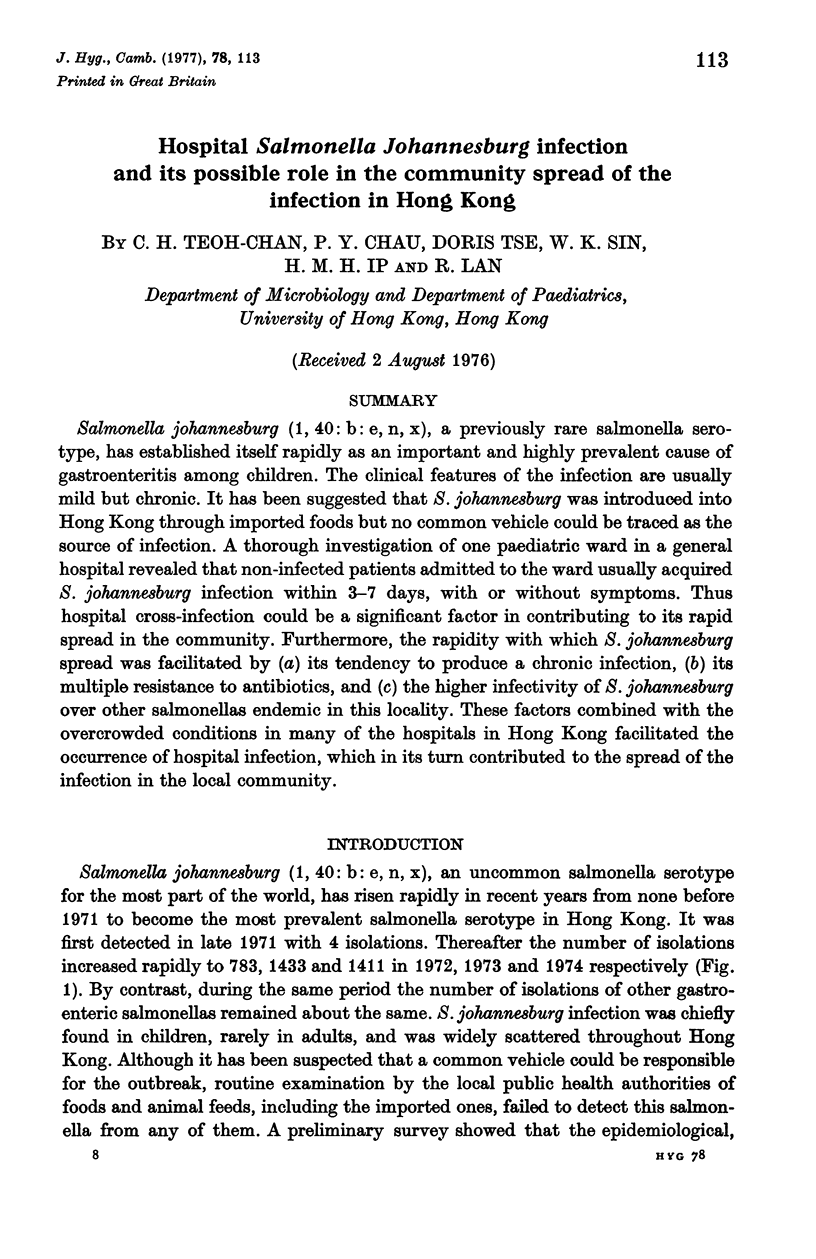
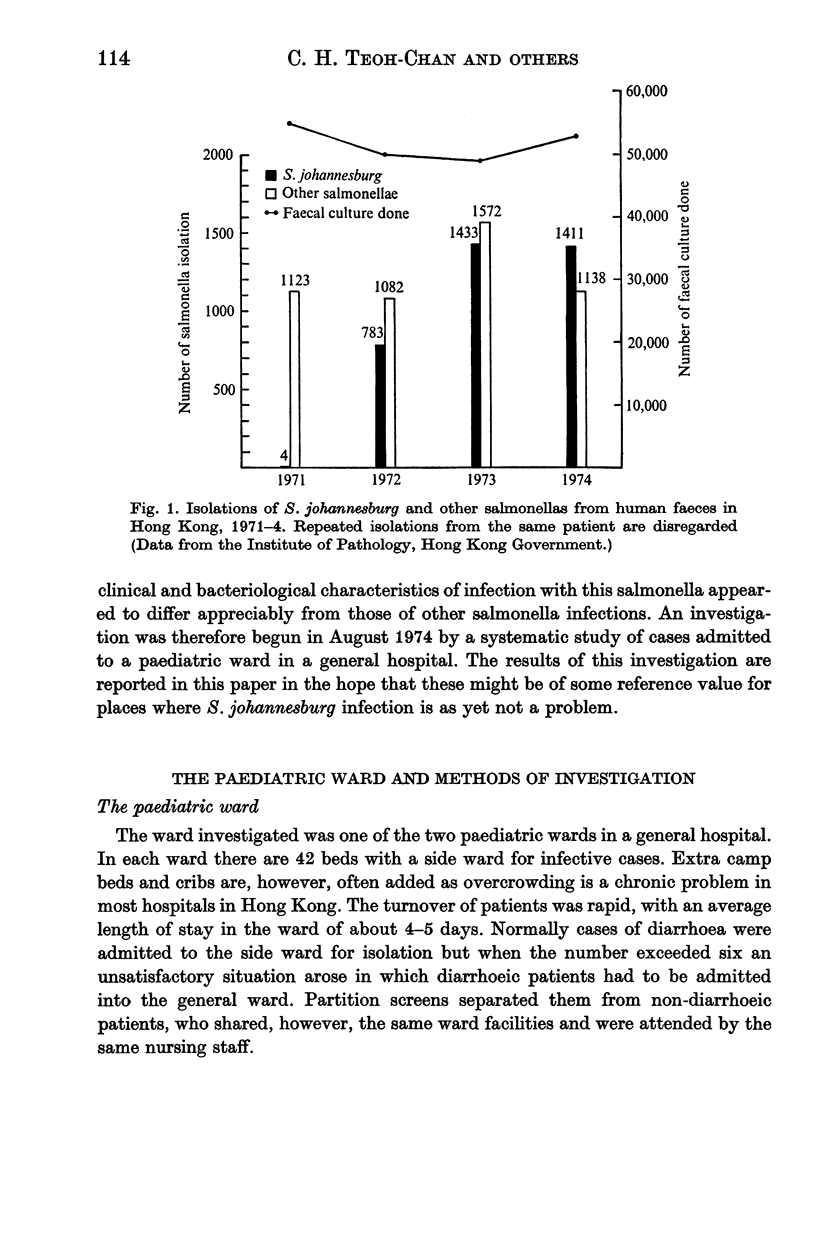
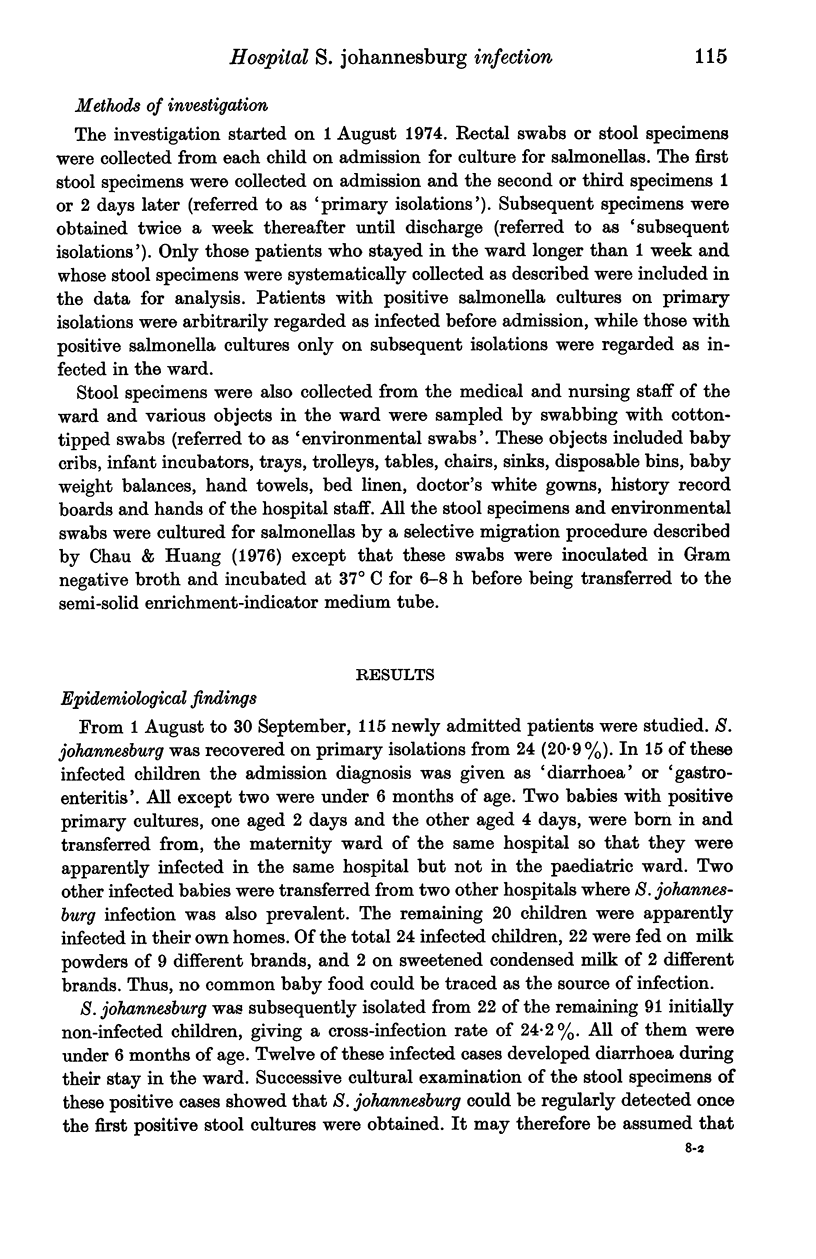
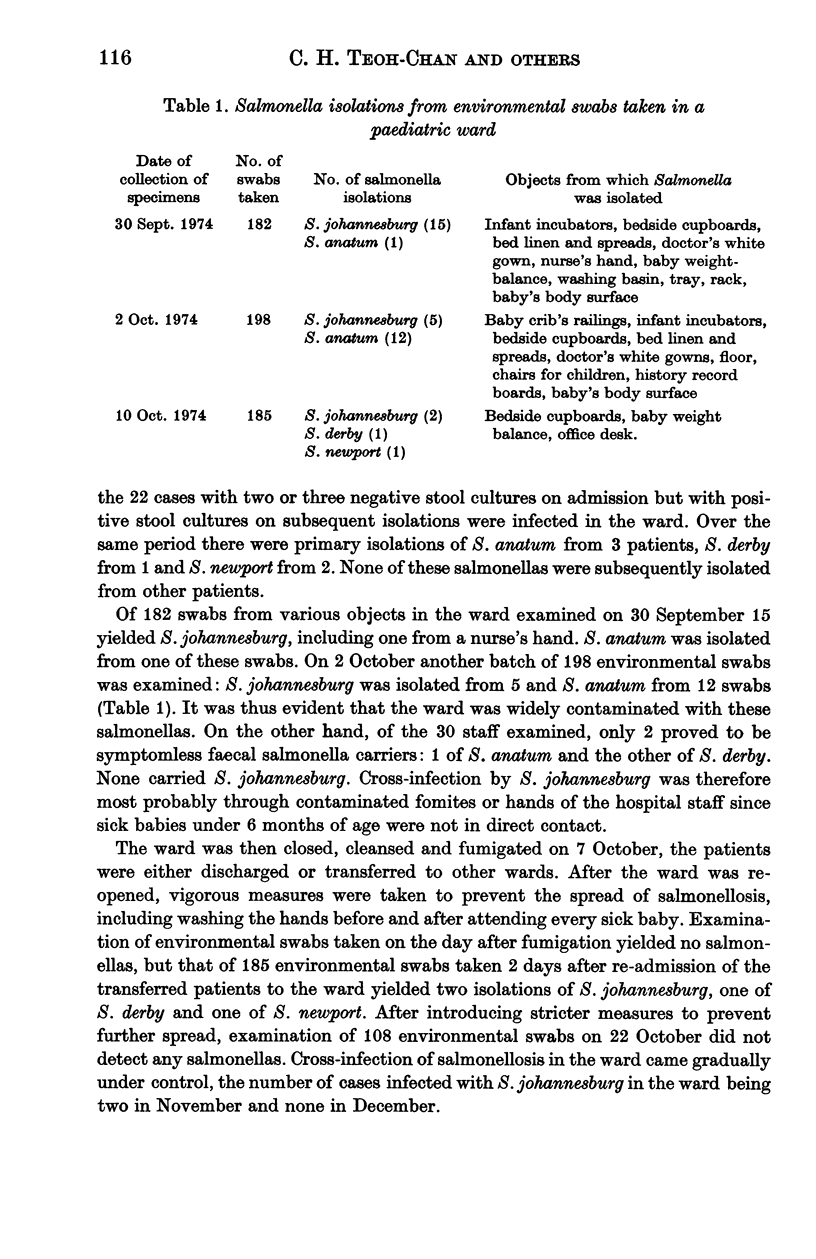

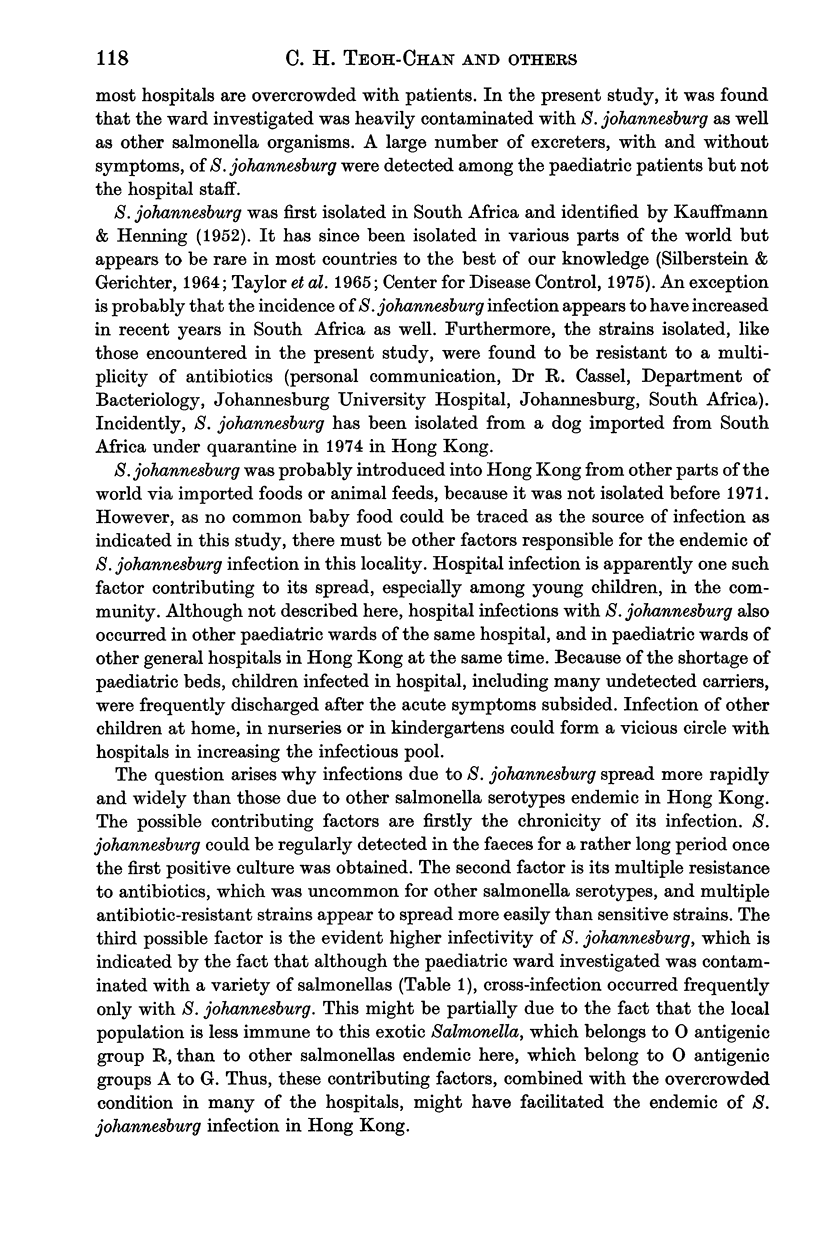
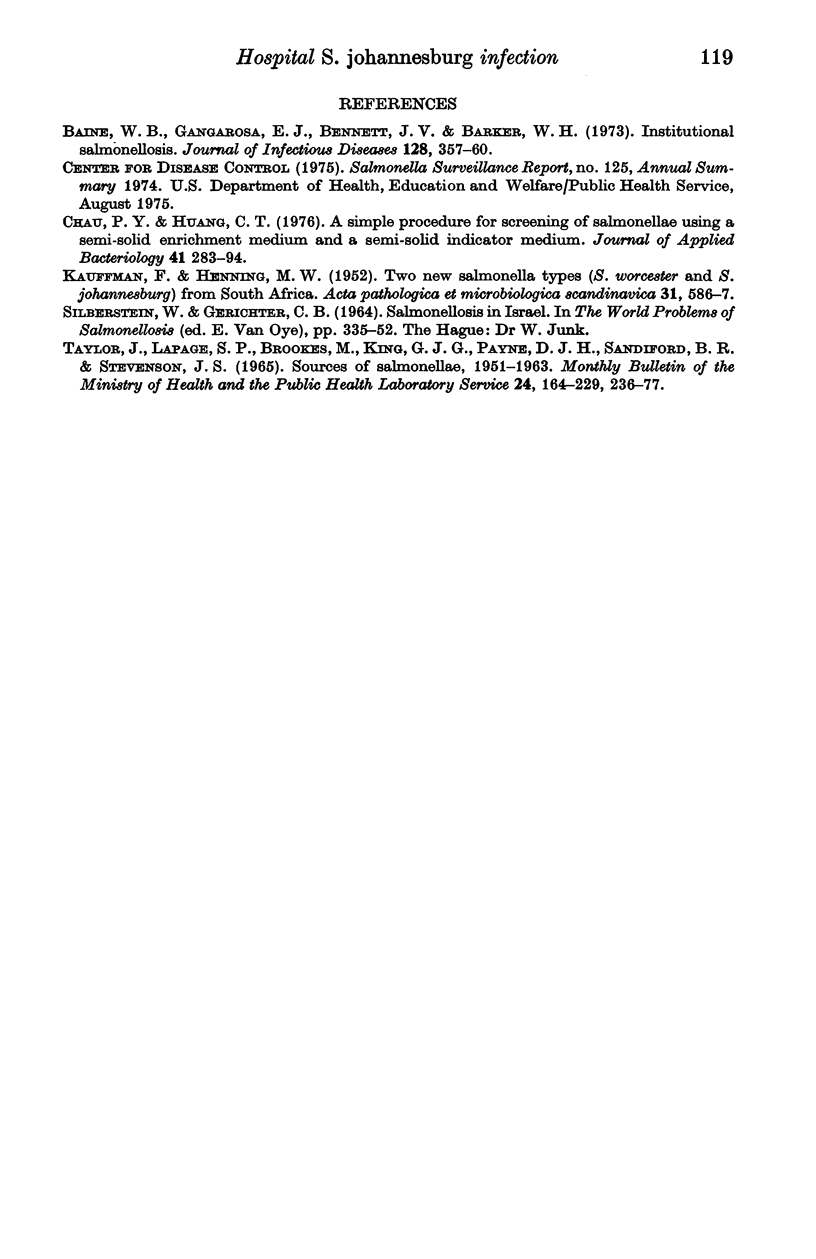
Selected References
These references are in PubMed. This may not be the complete list of references from this article.
- Baine W. B., Gangarosa E. J., Bennett J. V., Barker W. H., Jr Institutional salmonellosis. J Infect Dis. 1973 Sep;128(3):357–360. doi: 10.1093/infdis/128.3.357. [DOI] [PubMed] [Google Scholar]
- Chau P. Y., Huang C. T. A simple procedure for screening of Salmonellae using a semi-solid enrichment and a semi-solid indicator medium. J Appl Bacteriol. 1976 Oct;41(2):283–294. doi: 10.1111/j.1365-2672.1976.tb00632.x. [DOI] [PubMed] [Google Scholar]
- KAUFFMANN F., HENNING M. W. Two new Salmonella types (S. worcester and S. johannesburg) from South Africa. Acta Pathol Microbiol Scand. 1952;31(4):586–587. doi: 10.1111/j.1699-0463.1952.tb00227.x. [DOI] [PubMed] [Google Scholar]
- TAYLOR J., KING G. J., PAYNE D. J., SANDIFORD B. R., STEVENSON J. S. SOURCES OF SALMONELLAE, 1951-1963. Mon Bull Minist Health Public Health Lab Serv. 1965 Jul;24:164–CONTD. [PubMed] [Google Scholar]


